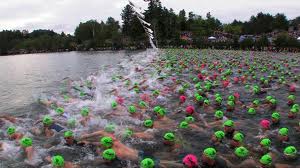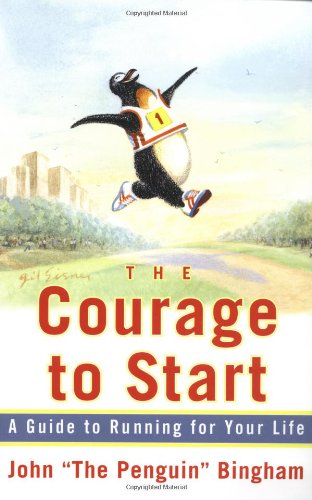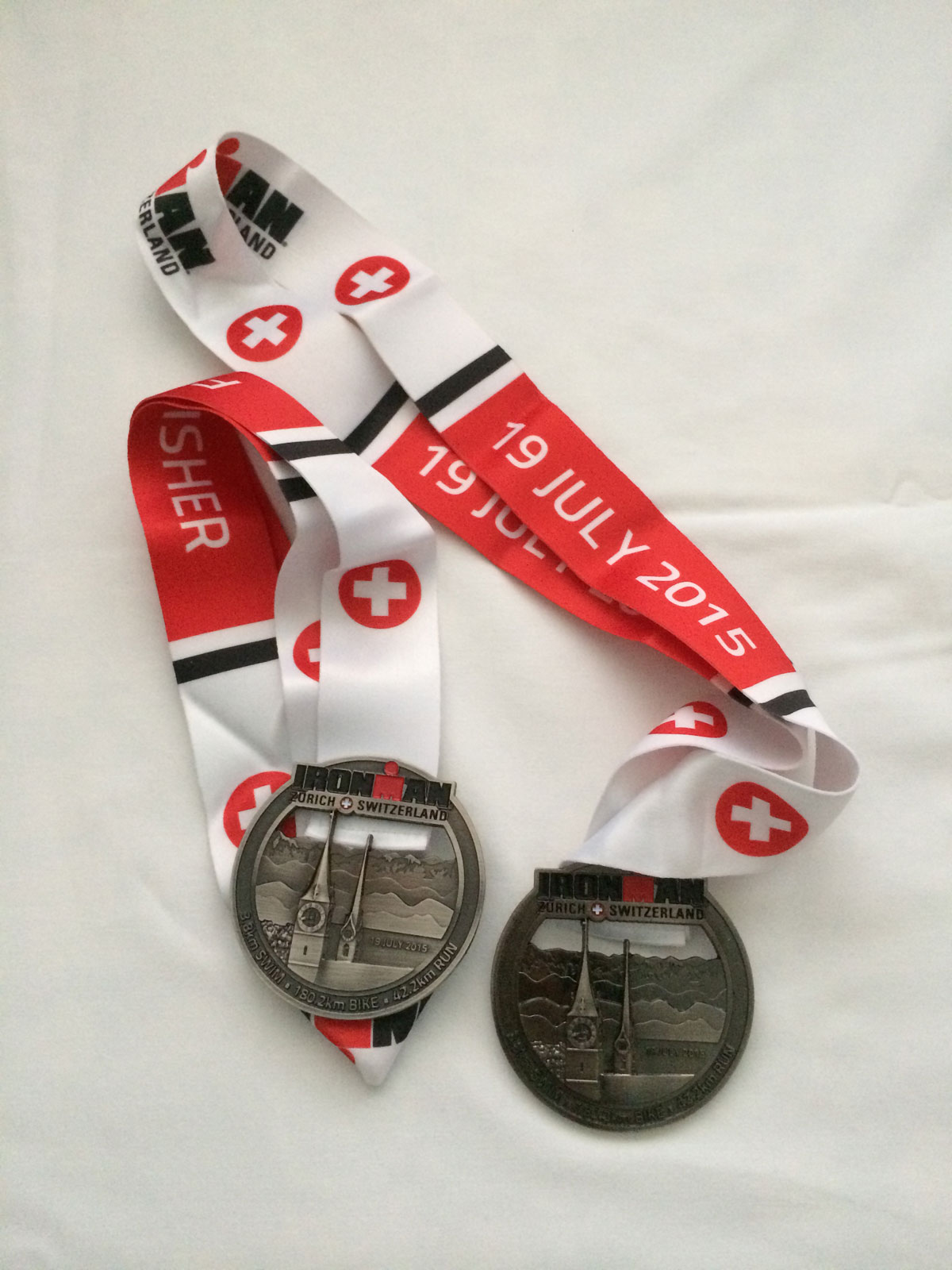I’ve been out of the IM racing circuit for 6 years, and a lot has changed. Some things are good, some not so good. The one change that has me the most irked (thus far) is the Rolling Swim start. For those who aren’t familiar with the concept, here’s the background.
That was Then
Historically, at all the Ironman races, the 2500 participants would all start at the same time – 7 am. Whether it was an in-water start or a beach start, all athletes, regardless of age, gender, or amateur/pro status would enter the water at one time and begin their sub-17-hour journey. Check out any race footage and you’ll see the images. They are mystical, and mind boggling and, well, they define what Ironman is all about. Persistence in a sea of craziness. Literally and figuratively. That is Ironman.
There’s no secret about what happens in the water – people get bumped around. A lot. Especially the aggressive swimmers, and those who have daylight PR goals. Everyone gets knocked a bit. Some people may have their goggles knocked off. Some get kicked. It happens. Get over it. But, Ironman race day is about a personal goal, a pacing strategy and working your plan. The swim should be no different. Smart athletes will seed themselves accordingly, with the right level of swimmers for their ability, and execute their plan. As for me, that means positioning myself off-center in the water, toward the middle of the group, and avoiding the nonsense for the first 10 seconds. Let the adrenaline junkies rush when the gun goes off. I’ll catch them on the bike.
This is Now
Fast forward to 2014. There have been, however some truly unfortunate stories. Isolated (and likely not directly related to what happens at the swim start), but they grab headlines. And, I can only imagine the impact to liability insurance. If I was Providence Equity Partners (who owns World Triathlon Corporation and the Ironman brand) I would be concerned too. But people still sign up in droves. They understand the risks and they sell out races. It’s certainly not preventing people from racing. If anything, it probably makes novice Ironman racers more at ease over the perception of a daunting day. Not all races have the rolling swim start, but I wouldn’t be surprised if it was coming. Now, the race starts at 6:30, with athletes entering the water in small groups.
Not everyone shares my purist view to keep the swim start the same. A long-time training partner and finisher of more IM races than me said “They did a rolling start at Tahoe last year and I thought it was great. It was a much smoother and safer way to start, and you can seed yourself in the pack by time – much like a marathon start. But you’ll still have plenty of people to swim over/around, get bumped by, etc.”
That’s fair. But here’s my short list of reasons for why I think this revised rule is contrary to the spirit of Ironman:
- This is Ironman people. This isn’t your neighborhood sprint or Olympic distance race. This is where an elite set of triathletes try to compete against themselves (and others). You know your limits – seed yourself and pace yourself accordingly. The meek should not sign up, nor show up.
- As another friend pointed out, even with a phased swim start, athletes still get bumped. So, the issue of getting jostled in the water doesn’t actually go away. For two-loop swims, you still have the earlier swimmers racing past you on the second pass. If anything, all you’ve done is expedite where on the course that might be. So, the rules of seeding – and strategy –still are in affect.
- Part of what makes Ironman magical is that everyone is on the same course, at the same time. If you pass someone (or you get passed), you know it’s them against you at exactly that time of day, that many hours, minutes and second into the race. Age groupers, Pros, para-athletes. There is no relativity. It’s actual. Now, you have no idea whether your time is better or worse. And you won’t know unless you ask, or until you finish.
- This approach is a slippery slope. Part of why I loathe big races like Nations’ Tri (an Olympic-distance race in Washington, DC) is that when they do age group/category swim starts – it often puts women, age 40-44 at the back of the start lineup. So that means some athletes are 60-120 minutes into their races before I even dip my toe into the water. Pros are finishing when I’m 5-10 miles into the bike. That sucks, and I’ve wasted a bunch of time waiting around to race. I might was well set up a route in my backyard and just work out on my own.
- Most important, in my humble opinion, is the Ironman finish. When you cross that line, you want to capture that moment in time, forever. With the hours, minutes and seconds it took to get you there. Am I now supposed to take a sharpie to my finisher photo and change the time to reflect my “actual” finish. Didn’t I just spend $800 on a race registration and thousands more preparing for an epic day. And you can’t give me a picture with my real finish time. Seriously?
Finally, I think about the minutes before midnight at Ironman. Midnight historically is the witching hour of Ironman because that’s the 17 hour mark which delineates those who complete the course in the time allotted, and those who don’t. It is truly an amazing experience with enthusiasm and energy that rivals anything I’ve seen elsewhere. What happens now? Do you stay until 11:30 pm now because people are starting 30 minutes early? I guess the witching hour is now the witching rolling 11;30 ½ hour. Yea, that sounds epic?!”?
Iroman has done a lot to “promote” the benefits. Check out Marni Sumbal’s article from last year. (Um, thanks for the view from the front of the pack.) But remember that Ironman is the competition that separates the “men from the boys.” When I think about the rolling swim start, I think it’s like adding training wheels to the event, or somehow watering down the challenge or blurring the identity of the race.
Clearly, I’m still participating a week from Sunday at Ironman Lake Placid, regardless of the change in rules. And, 15-20 minutes probably won’t matter to me in the grand scheme. I just wonder what’s next. Separate race days for age groupers? Separate courses? Yes, I’m being extreme. And maybe I’ll have a different view on Race Day. Well. Maybe.



